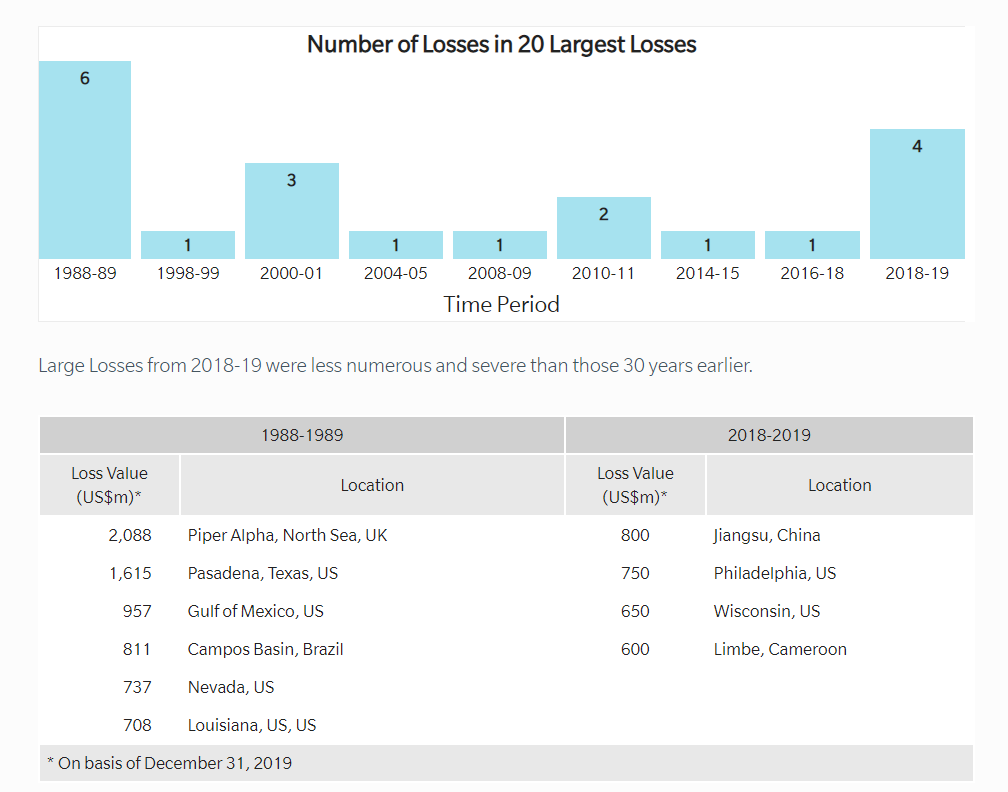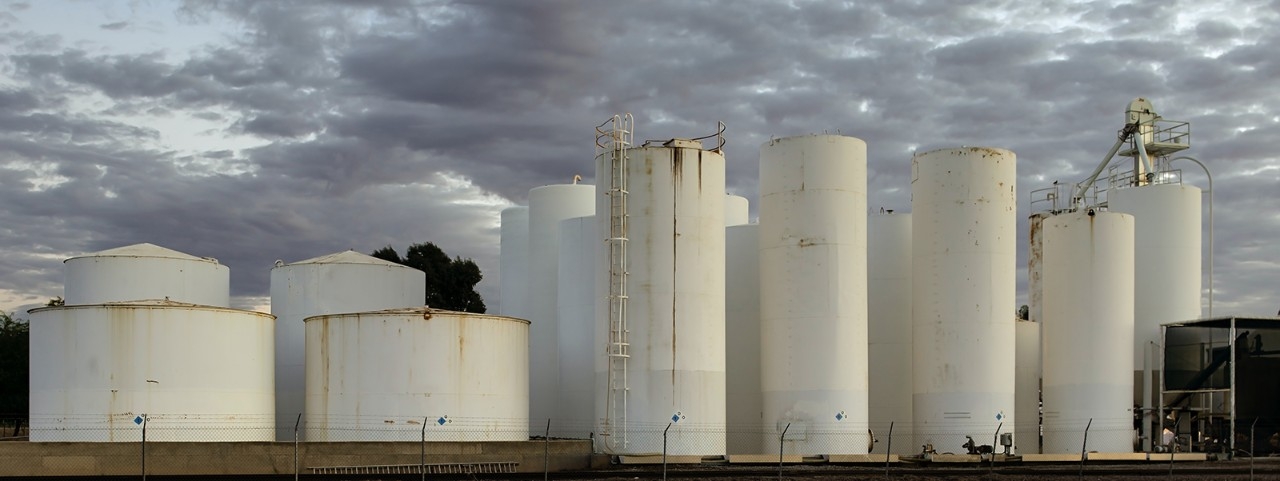Welcome to the 26th edition of Marsh JLT Specialty's 100 Largest Losses in the Hydrocarbon Industry report. The publication summarizes the 100 largest property damage losses from the hydrocarbon extraction, transport, and processing industry between 1974 and 2019. It allows us to look back at our industry's history, identify key issues and trends from large losses, and understand whether the industry is making progress.
Losses
The last two years have been turbulent; eight property damage losses from 2018-19 were among the 50-largest energy losses of all time. Four recent losses were among the 20-largest losses ever.
Not since 1988-89 (when six of the largest ever energy losses occurred — including Piper Alpha), has a two-year period seen such a high concentration of large losses.

Cause of Loss
Declining risk standards in some areas over the past 12 years may be a factor. For example, our risk engineer surveys found that "engineering standards" at refineries declined over this period, and that both gas processing plants and terminals/distribution underwent an overall deterioration in risk quality over the past 12 years.
We also found that plants older than 30 years are far more likely to experience losses, suggesting the industry needs to look more closely at the risks of older refineries and petrochemical plants.
The cause of loss tends to vary depending on the age of a plant, found Liberty Specialty Markets, a contributor to this report. In the first 10 years of a plant’s operation, most losses are caused by operations-related failures.
As plant operations experience develops, the number of losses reduces, until age takes its toll and there is a steep rise in both loss frequency and magnitude in plants more than 30-years-old. In plants older than 30 years, mechanical-integrity-related failures account for 65% of losses.
Barriers to Learning from Past Mistakes
The most commonly cited energy industry risk recommendations made by Marsh JLT Specialty over the past few years ("systems of work," "inspection," and "fireproofing") were prevalent issues among the largest issues in 1988-99 — reinforcing the view that the industry may not have learnt from past mistakes.
During the Piper Alpha incident in 1988, the largest industry property damage loss of all time, there were shortcomings in all three areas of the root cause "systems of work" (which includes permitting, management of change, and shift handover).
Similarly, the largest losses in 1988-1989 and 2018-19 both suffered from the escalating factors "emergency response plans" (ERPs) and "fire protection."
Four key factors arguably prevent lessons from being learnt from losses:
- Distance: Parties unconsciously feel less affected by events a long way away.
- Culture: Preventing lessons from being implemented effectively.
- Tunnel vision: Not realizing wider relevance of lessons.
- Time: Lessons are learnt, but then forgotten or solutions are insufficiently robust.
